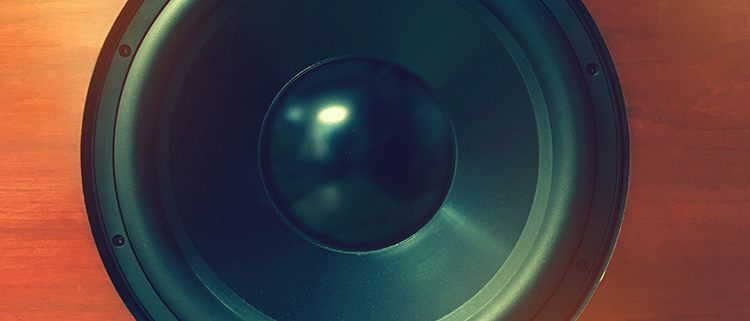
- Driver Size – Size really does matter when shopping for a subwoofer. That’s because you need to move significant volumes of air to reproduce the low notes. The two ways this movement of air happens relates to the surface area of the driver(s) as well as the driver’s excursion (how far the cone moves in and out). Small subs try to move the air by having higher excursion but too much excursion can lead to distortion and non-linearities. Large cones move more air with less excursion, but their larger area can result in cone break-up issues that also produce harmonic distortion. Look for a balance between the size and excursion. Also, check the ratings on the driver(s) to see what size of voice coil and magnet they have. (Hint: a bigger motor structure is almost always better for a whole host of reasons.)
- Loading – Subs these days are usually either sealed or ported. Designs with passive radiators fall into the ported category. All things being equal, sealed subs usually have smaller cabinets than ported/passive radiator designs. It is a commonly held belief that sealed subs are tighter and better for music while ported designs tend to work better for movies and usually have more bass extension. This isn’t a hard and fast rule but is largely true in most cases. So, think about what program material you will playback the most and get the right loading for your needs.
- Power Rating – Almost all subwoofers are powered. And they use various different flavors of amp architecture. Some subs have ridiculous power ratings and these numbers will turn heads, but the fact of the matter is you probably need a lot less power than you would think. 8” subs for small rooms can work well with 150 watts while massive 15” subs for larger rooms don’t need much more than 500 watts to put out all the bass you will need. That’s not to say you shouldn’t get a more powerful amp if it fits in your budget. If you can afford a more powerful sub, the amp won’t have to work near its limit which will mean lower distortion and more headroom. Many manufacturers have online calculators to help you select a sub, based on your room size.
- Cabinet and Finish – Most subs are made of some kind of wood product (MDF is most common). Although some manufacturers claim that a sub doesn’t need the most rigid cabinet, this is not common. Our advice is to find a sub that has a rigid, well-braced cabinet to reduce the possibility of sympathetic vibrations in the audible band. Keep in mind that subwoofers tend to be good-sized components that will take up a significant amount of space in your room. If the sub will be out in the open and visible, be sure you consider what type of finish it has and if it will fit in with the rest of your décor.
- Just One or Multiple Subs – Adding a subwoofer to your system does more than provide more or better bass. It will also open up the soundstage and make you sense a larger space than before. A good sub can have other surprising effects as well. Nevertheless, it’s a good idea to find a subwoofer that has its own room correction. Better yet, think about multiple subs. In some case, several less expensive subs can sound much better than a single, more expensive one. It’s because of the room interactions and how several subs spaced around the room can cancel and reinforce room effects, thus providing a much smoother response.
Secrets Sponsor
Secrets Sponsor

